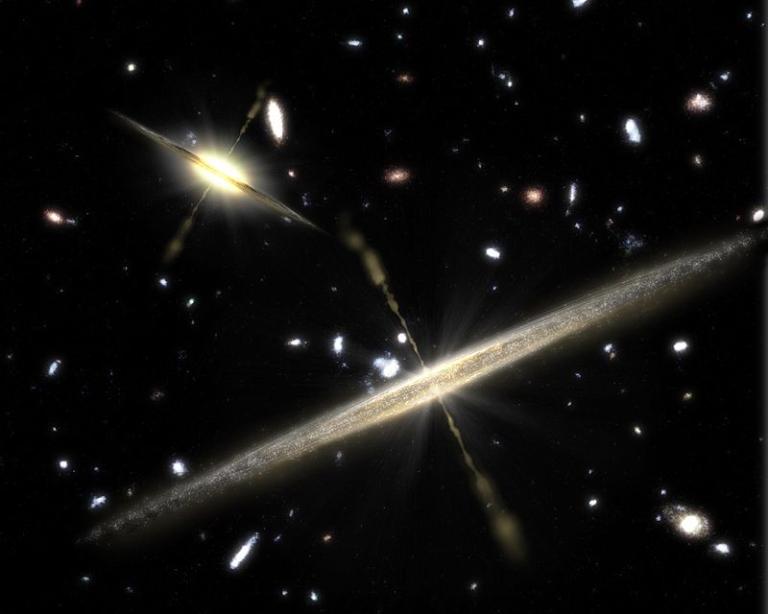
***
But first: Yes, Vladimir Putin’s “special military operation” to save Ukraine from Jewish Nazis and to defend Russian against Ukrainian aggression is likely to have religious implications:
“Podcast: What’s next for Russian priests who asked if Putin will be damned for invading Ukraine?”
“Russian Victory Would Mark End of Religious Freedom in Ukraine”
As of three days ago, anyway:
“Kyiv Ukraine Temple still standing as the Russian onslaught continues”
***
But there are, fortunately, more inspiring things to contemplate than the character of Vladimir Putin. I share here a quotation from Surprised by Meaning: Science, Faith, and How We Make Sense of Things (Louisville: Westminster John Knox Press, 2011), by the Oxford theologian Alister McGrath, who holds three Oxford doctorates — in divinity, intellectual history, and molecular biophysics:
Examples of the astrophysical “fine-tuning” of fundamental cosmological constants include the following:
- If the strong coupling constant were slightly smaller, hydrogen would be the only element in the universe. Since the evolution of life as we know it is fundamentally dependent on the chemical properties of carbon, that life could not have come into being without some hydrogen being converted to carbon by fusion. On the other hand, if the strong coupling constant were slightly larger (even by as much as 2 percent), the hydrogen would have been converted to helium, with the result that no long-lived stars would have been formed. Since such stars are regarded as essential to the emergence of life, such a conversion would have led to life as we know it failing to emerge.
- If the weak fine constant were slightly smaller, no hydrogen would have formed during the early history of the universe. Consequently, no stars would have been formed. On the other hand, if it were slightly larger, supernovae would have been unable to eject the heavier elements necessary for life. In either case, life as we know it could not have emerged.
- If the electromagnetic fine structure constant were slightly larger, the stars would not be hot enough to warm planets to a temperature sufficient to maintain life in the form in which we know it. If smaller, the stars would have burned out too quickly to allow life to evolve on these planets.
- If the gravitational fine structure constant were slightly smaller, stars and planets would not have been able to form because they would have lacked the gravitational constraints necessary for coalescence of their constituent material. If stronger, the stars thus formed would have burned out too quickly to allow the evolution of life. (59-60)
***
In his stimulating book Biocosm: The New Scientific Theory of Evolution: Intelligent Life is the Architect of the Universe (Makawao, Maui, Hawaii: Inner Ocean Publishing, 2003), James N. Gardner cites The Dreams of Reason, a 1988 book written by the theoretical physicist Heinz Pagels, who, at the time of his tragic death in a Colorado mountain climbing accident during the same year that book was published, was the executive director and chief executive officer of the New York Academy of Sciences and an adjunct professor of physics at Rockefeller University.
Heinz Pagels’s widow, by the way, is the noted scholar and writer Elaine Pagels, who has, alas, experienced more than her share of tragedy. Their son Mark died in 1987, after a four-year illness. The following year, her husband fell to his death on Pyramid Peak, only a few miles from the Aspen Center for Physics where he commonly spent his summers.
First, Heinz Pagels himself:
What [scientists] find is that the architecture of the universe is indeed built according to invisible universal rules, what I call the cosmic code — the building code of the Demiurge. . . . Scientists in discovering this code are deciphering the Demiurge’s hidden message, the tricks he used in creating the universe. No human mind could have arranged for any message so flawlessly coherent, so strangely imaginative, and sometimes downright bizarre. It must be the work of an Alien Intelligence! [cited on page 6]
Please note that Pagels wasn’t offering theistic apologetics here. Certainly, in any case, he wasn’t intending to do so. He was an atheist. His “Demiurge” was — apparently — mere imaginative metaphor.
[W]e can safely drop the traditional idea of a Demiurge, for there is no scientific evidence for a Creator of the natural world, no evidence for a will or purpose in nature that goes beyond the known laws of nature. [cited on pages 6-7]
Gardner comments:
The strong anthropic principle, which Pagels quietly embraced, predicts that the origin of life and intelligence in the universe will eventually be shown to be strongly favored by the laws of nature. The less controversial weak version of the anthropic principle, which Pagels scornfully disdained, merely states in tautological fashion that since human observers inhabit this particular universe, it must perforce be life-friendly or it would not contain any observers resembling ourselves. (7-8)
As this book will argue, the anthropic, or life-friendly, qualities of our cosmos — a spectacularly unlikely congeries of physical laws and constants that seem altogether too perfectly suited to the emergence and evolution of carbon-based life and intelligence to be the product of any conceivable random process — constitute both a profound mystery and a subtle set of clues pointing toward a possible solution. These clues indicate that the impression of design in nature is no mere illusion and that the predisposition of the cosmos to breathe life and intelligence into inanimate matter is deeply embedded in the organizing principles of nature. As Pagels put it, “My own view is that although we do not yet know the fundamental laws, when and if we find them the possibility of life in a universe governed by those laws will be written into them. The existence of life in the universe is not a selective principle acting upon the laws of nature; rather it is a consequence of them. (8)
***
The Christopher Hitchens Memorial “How Religion Poisons Everything” File© is full to overflowing, so I need to open the sluice gates up just a bit:
“How Church funds improved education for for refugee students in Africa”
“The Latest on How the Church Is Helping Refugees in Europe”












